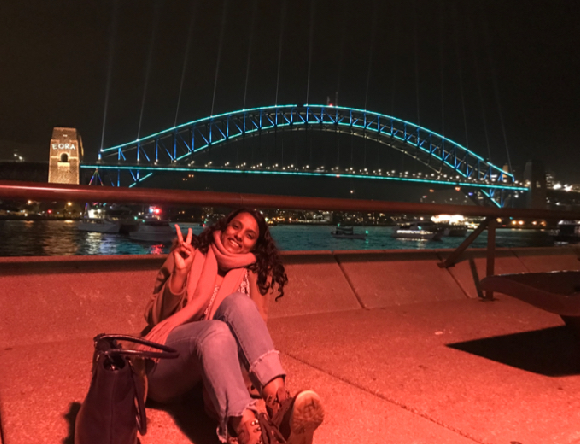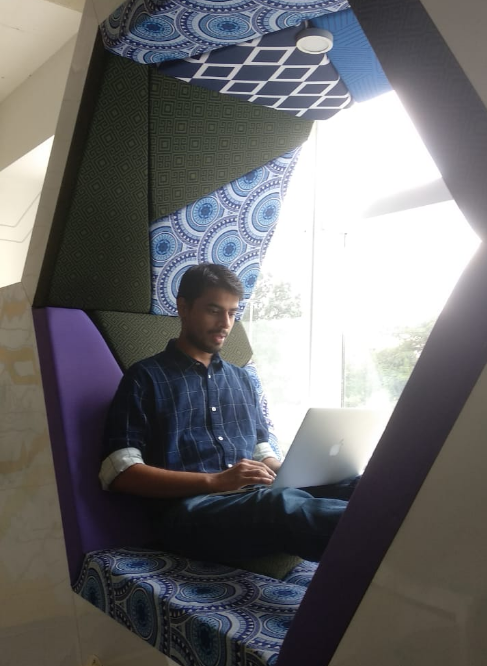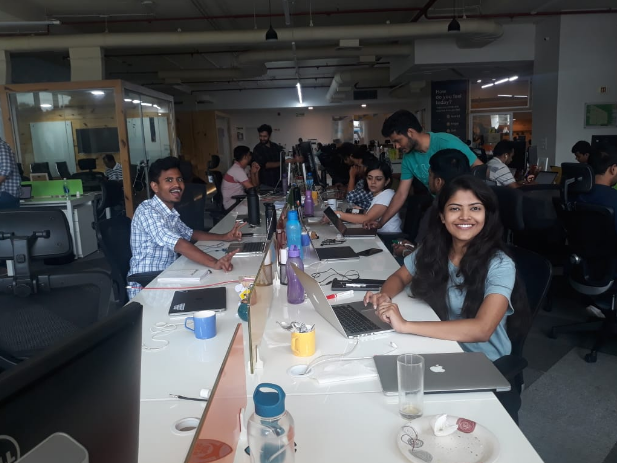

Body of IITR

This year, I spent my summers interning at Razorpay as a full-stack designer where I spent the majority of my time designing and developing digital experiences.
Towards the beginning of my 2nd year spring semester, I was completely clueless and didn’t have any plans for my summers. I had the option of doing a Design internship as I’d been working with IMG as a designer, but the idea didn’t feel that exciting at that point.
I got my hands dirty with design and development early on in my college life since I loved building stuff, especially because it involved my creativity and intellect. “Building” sounds like a really generic word. You can’t really associate it with a particular job title. There are different job titles like those of a designer and a developer that work together to make something new, and that interested me as a whole, but the roles did not interest me individually.
As the semester progressed I grew more restless with regard to my summers. My seniors at IMG advised me to go for a design internship in case I didn’t have anything else to do. This way I’d not only get industry exposure but would also get to know whether I would like to pursue design further or not. And by the middle of the semester I had decided to go with this plan.
I began by documenting all of the projects that I had done so far. I wrote case-studies on Medium about the applications that I had designed and uploaded the source code of my dev-related projects on GitHub. Next, I updated my LinkedIn profile and resume. Since I was aiming for a design internship, I specifically kept it design-focused. I was now ready to apply but I didn’t have any company emails to begin with. Seniors couldn’t help me much either, so I made my own list. You can do this too by:
Going through the career pages of various startup websites
Sending several LinkedIn connection requests to the people whose team you want to join. You can see their email once they accept your request. (Please don’t spam people. Be polite, respectful and dignified in your approach)
Contacting them on Twitter or similar social media platforms.
The first company I emailed was Razorpay and their design lead replied back a week later and scheduled my telephonic interview for a week later.
During the interview, I was asked to explain two of my major projects in detail. I was questioned on a number of design decisions that I had taken in those projects. It’s really important for designers to back all of their decisions with logic (more on this later). You should always be able to answer the whys. Though I had applied for a Product Design internship, I was also questioned on my development skills, mainly HTML/CSS and JavaScript (since my resume mentioned that i had worked on development related projects too). Lastly, I was asked if I was interested in doing a full-stack design internship to which I replied positively. To assess my skills, I was given a small assignment to complete which I did and emailed. My internship was confirmed within two weeks. I kept sending emails to different startups and revised my cover-letter several times within this waiting period.
Razorpay has a number of products to offer, and each product serves a different financial use-case. This variety makes it difficult for industries to understand which products are meant for their needs and which aren’t. Hence, to tackle this problem we thought of an interactive section for the website’s homepage that can help industries understand their needs and recommend appropriate product solutions. The main intent of this project was to increase our reach to different industries through our website by making it easier for them to understand what the organization had to offer. The project was executed in three stages: user research, design, and development. I used to have frequent discussions with my mentor each week on this project. I also pursued a few side projects with the front-end team while I was working on my main project just to keep myself from not getting bored with a single task.

People at Razorpay put an immense amount of trust in you and let you have complete freedom in terms of the way you want to work. You’ll not only be made aware about your role in a project but also how you’ll be impacting the entire organisation. This way, you know that your work is important and that you need to be responsible for it.
Razorpay maintains complete transparency. Any employee can know about anything going on within the organisation irrespective of their position or vertical. You are free to question anyone on anything related to the organisation. There have been a number of instances where I went up to random people within the organisation to learn more about their work and experiences. Razorpay follows an open office culture and there are no offices or cubicles. This helps in establishing a sense of visual transparency and equality. Even the CEOs had the same desk as us and not a cubicle.
As an intern you are free to do anything. Not happy with Design? Switch to Front-end or maybe explore marketing. You can even work on a project of your choice in case you are not happy with your current project, or maybe start one on your own. The thing I love the most about it was the free food at all times of the day. Every day I used to have a bowl of Chocos, buttered toast and a glass of fruit juice for breakfast. Now I hate Chocos.
Before I came to Razorpay, I used to practice what I call an intuition-led design process i.e. my design decisions were led by my intuition instead of explicit logic. Though my intuition was more or less good and my solutions okay-ish, this practice limited me in a number of ways:
I was only able to think of design solutions that were already in existence. Hence wherever I saw similar situations popping up I would simply apply solutions that I was already familiar with.
I wasn’t exactly able to back up my decisions with verbal logic. My intuition always gave me good enough solutions but none of it came out from a series of logical statements and conclusions that could be used to defend my solutions.
This affected the uniqueness and originality of my solutions because to be able to come up with an original solution, you always need to go back to the fundamentals of a problem and work your way up from there.
I learned to ask “why” to every decision that I took. This prevented me from getting biased by my intuition and approach a problem from a logical perspective. I learned to constantly ask “why” to land upon a fundamental truth and work my way up from there in a series of logical steps to arrive at a solution that’s optimized for a particular need. You can apply this model to any decision-making process.
My time at Razorpay has made me more sure of my love towards “Building”. I’ve realized that I would like to play multiple roles at my workplace and hence on my next internship I might want to work with an early-stage startup.